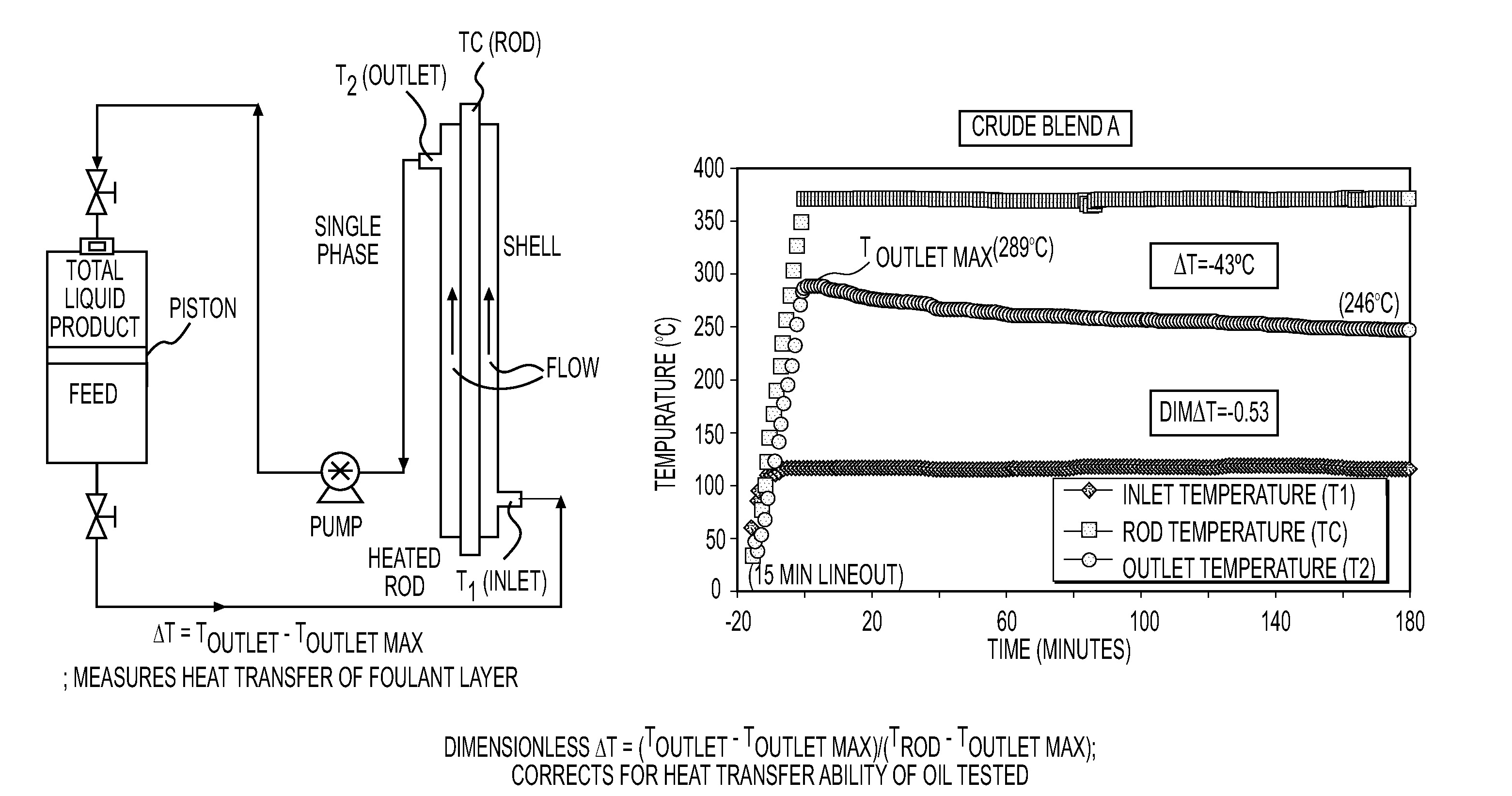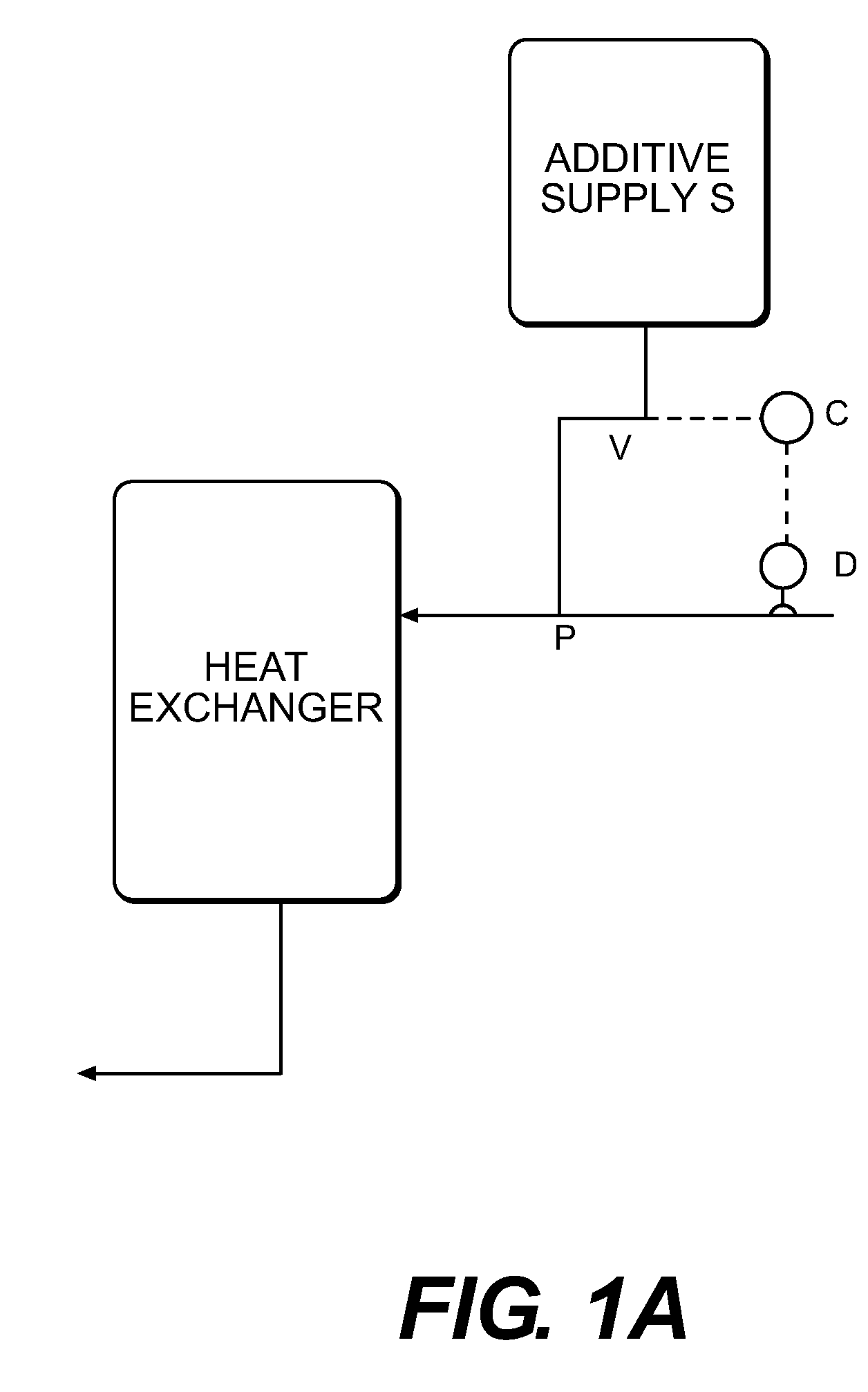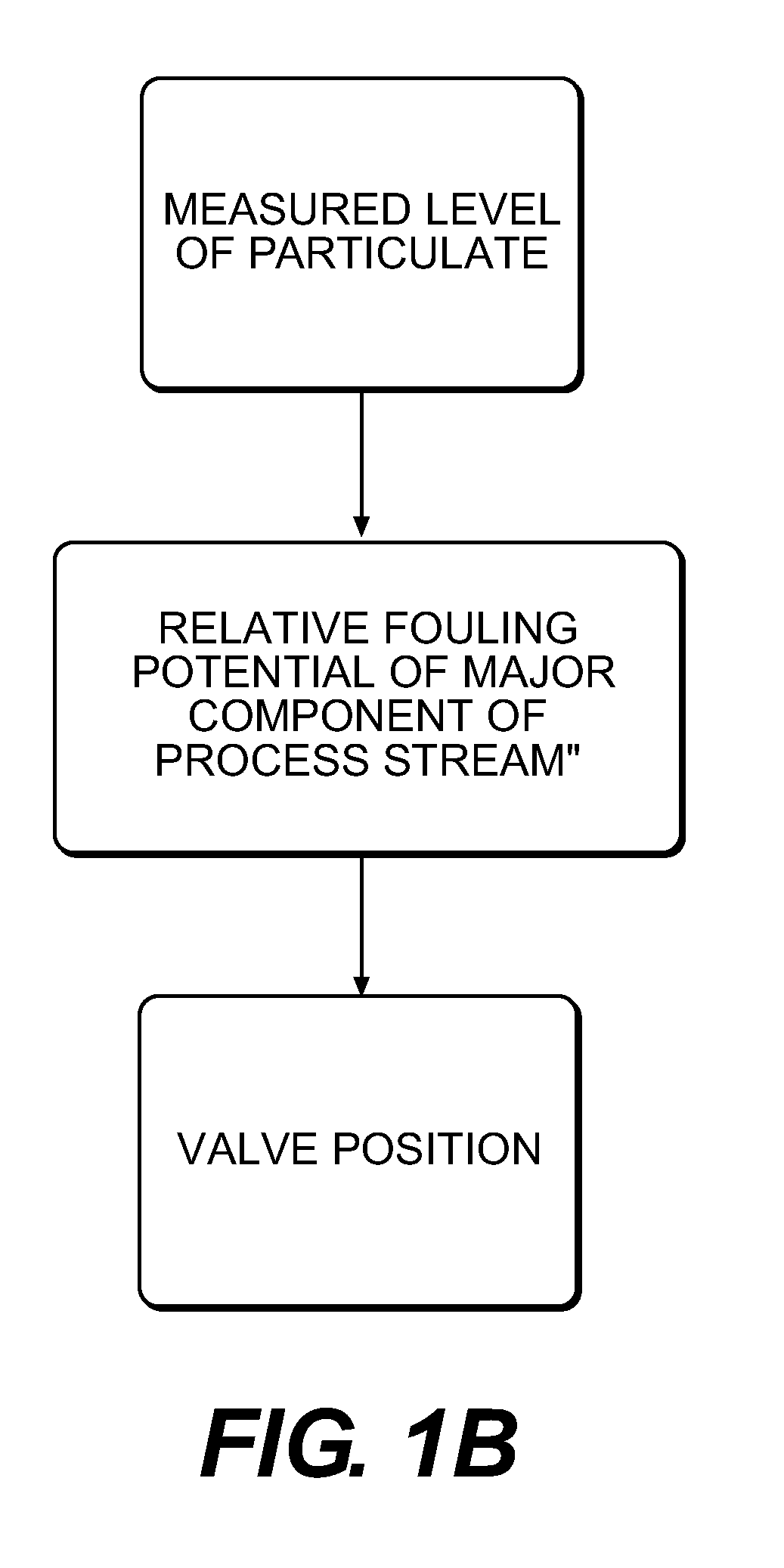Method and system for controlling the amount of Anti-fouling additive for particulate-induced fouling mitigation in refining operations
a technology of additives and additives, applied in the field of methods and systems of controlling the amount of antifouling additives, can solve the problems of increasing energy costs of petroleum refineries, reducing reducing the amount of additives , to achieve the effect of enhancing the effectiveness of additives, reducing particulate-induced fouling, and reducing the amount of additives
- Summary
- Abstract
- Description
- Claims
- Application Information
AI Technical Summary
Benefits of technology
Problems solved by technology
Method used
Image
Examples
example 1
[0064]FIG. 2 shows the Alcor testing configuration used for measuring the relative fouling provided by a given crude oil in a simulated heat exchanger. The testing arrangement includes a reservoir containing a feed supply of crude oil. The feed supply is heated to a selected temperature (e.g. 150° C. / 302° F.). The housing shell contains a vertically oriented heated rod. The heated rod is typically formed from a carbon steel. The heated rod simulates a tube in a heat exchanger. The heated rod is electrically heated to a preset temperature (e.g. 370° C. / 698° F.) and maintained at such temperature during the trial. The feed supply is pumped across the heated rod at a constant flow rate (e.g. 3.0 mL / minute). The spent feed supply is collected in the top section of the reservoir. The spent feed supply is separated from the untreated feed supply oil by a sealed piston, thereby allowing for once-through operation. The system is pressurized with nitrogen (e.g. 400-500 psig) to ensure gases ...
example 2
[0066]During the constant surface temperature testing, foulant forms, deposits and builds up on the heated surface. The organic portion of the foulant deposits thermally degrade to coke. The coke deposits cause an insulating effect that reduces the efficiency and / or ability of the surface to heat the oil passing over it. The resulting reduction in outlet bulk fluid temperature continues over time as fouling continues. This reduction in temperature can be referred to as the outlet liquid ΔT or dT and can be dependent on the type of crude oil / blend, testing conditions and / or other effects, such as the presence of salts, sediment or other fouling promoting materials. Typically, the Alcor fouling test is carried out for 180 minutes. The total fouling, as measured by the total reduction in outlet liquid temperature is referred to as ΔT180 or dT180.
[0067]Alcor Dimensionless Delta T (DimΔT or Dim dT). The Alcor fouling test simulations provide a measurement of heat transfer resistance due ...
PUM
| Property | Measurement | Unit |
|---|---|---|
| fouling | aaaaa | aaaaa |
| fouling potential | aaaaa | aaaaa |
| relative fouling potential | aaaaa | aaaaa |
Abstract
Description
Claims
Application Information
 Login to View More
Login to View More - R&D
- Intellectual Property
- Life Sciences
- Materials
- Tech Scout
- Unparalleled Data Quality
- Higher Quality Content
- 60% Fewer Hallucinations
Browse by: Latest US Patents, China's latest patents, Technical Efficacy Thesaurus, Application Domain, Technology Topic, Popular Technical Reports.
© 2025 PatSnap. All rights reserved.Legal|Privacy policy|Modern Slavery Act Transparency Statement|Sitemap|About US| Contact US: help@patsnap.com



